This checkin to GC69KHB It's leap year day, let us all get a souvenir reflects a geocaching.com log entry. See more of Dan's cache logs.
Hurrah! Here I am!
This checkin to GC69KHB It's leap year day, let us all get a souvenir reflects a geocaching.com log entry. See more of Dan's cache logs.
Hurrah! Here I am!
This checkin to GC54F78 Oxford Steganography #1 - Open In New Tab reflects a geocaching.com log entry. See more of Dan's cache logs.
It’s proved impossible for me to re-create the lenses used as clues in the parts of this series that have been “muggled”, and it seems that the only solution is to dis-assemble and archive the entire series. The bonus cache (#5) will remain available until March 2016 for anybody who’s solved the puzzle but hasn’t yet found it.
This checkin to GC54F7B Oxford Steganography #2 - Selected Text reflects a geocaching.com log entry. See more of Dan's cache logs.
It’s proved impossible for me to re-create the lenses used as clues in the parts of this series that have been “muggled”, and it seems that the only solution is to dis-assemble and archive the entire series. The bonus cache (#5) will remain available until March 2016 for anybody who’s solved the puzzle but hasn’t yet found it.
This checkin to GC54F7J Oxford Steganography #3 - X-Ray reflects a geocaching.com log entry. See more of Dan's cache logs.
It’s proved impossible for me to re-create the lenses used as clues in the parts of this series that have been “muggled”, and it seems that the only solution is to dis-assemble and archive the entire series. The bonus cache (#5) will remain available until March 2016 for anybody who’s solved the puzzle but hasn’t yet found it.
This checkin to GLKZW2HZ Silver Screen reflects a geocaching.com log entry. See more of Dan's cache logs.
FTF! Happened to be in the city centre eating my sandwiches and looking at my phone when the alert came in: new cache, less than a kilometre away! Hopped on my bike and bombed it down to find this wonderfully subtle cache. Tweezers would definitely have helped here, but a safety pin that I happened to be carrying worked pretty well too. Nice cache, hope it lasts! TFTC.
This is the second in a three-part blog post about telling stories using virtual reality. Read all of the parts here.
I’m still waiting to get in on the Oculus Rift and HTC Vive magic when they’re made generally-available, later this year. But for the meantime, I’m enjoying quite how hackable VR technologies are. I chucked my Samsung Galaxy S6 edge into an I Am Cardboard DSCVR, paired it with a gaming PC using TrinusVR, used GlovePIE to hook up a Wii remote (playing games with a keyboard or even a gamepad is challenging if your headset doesn’t have a headstrap, so a one-handed control is needed), and played a game of Gone Home. It’s a cheap and simple way to jump into VR gaming, especially if – like me – you already own the electronic components: the phone, PC, and Wiimote.
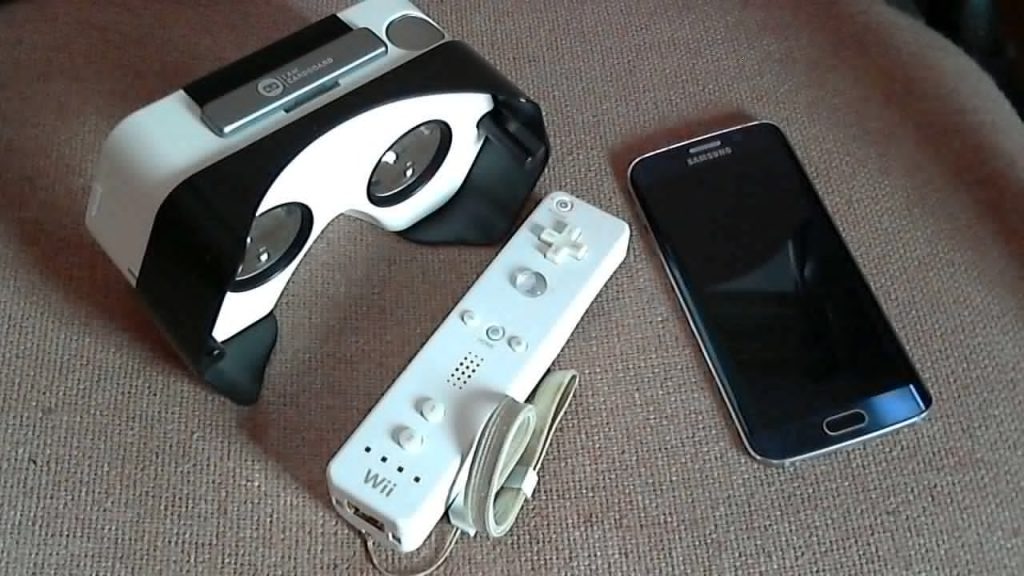
While the media seems to mostly fixate on the value of VR in “action” gaming – shoot-’em-ups, flight simulators, etc. – I actually think there’s possibly greater value in it more story-driven genres. I chose Gone Home for my experiment, above, because it’s an adventure that you play at your own pace, where the amount you get out of it as a story depends on your level of attention to detail, not how quickly you can pull a trigger. Especially on this kind of highly-affordable VR gear, “twitchy” experiences that require rapid head turning are particularly unsatisfying, not-least because the response time of even the fastest screens is always going to be significantly slower than that of real life. But as a storytelling medium (especially in an affordable form) it’s got incredible potential.
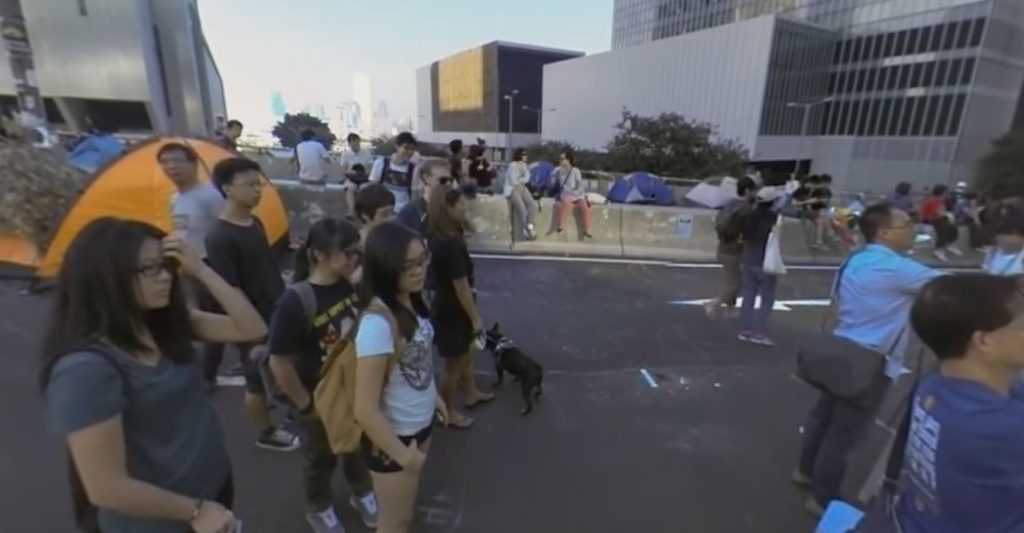
I was really pleased to discover that some content creators are already experimenting with the storytelling potential of immersive VR experiences. An example would be the video Hong Kong Unrest – a 360° Virtual Reality Documentary, freely-available on YouTube. Standing his camera (presumably a Jump camera rig, or something similar) amongst the crowds of the 2014 Hong Kong protests, the creator of this documentary gives us a great opportunity to feel as though we’re standing right there with the protesters. The sense of immersion of being “with” the protesters is, in itself, a storytelling statement that shows the filmmaker’s bias: you’re encouraged to empathise with the disenfranchised Hong Kong voters, to feel like you’re not only with them in a virtual sense, but emotionally with them in support of their situation. I’m afraid that watching the click-and-drag version of the video doesn’t do it justice: strap a Cardboard to your head to get the full experience.

But aside from the opportunities it presents, Virtual Reality brings huge new challenges for content creators, too. Consider that iconic spaghetti western The Good, The Bad, And The Ugly. The opening scene drops us right into one of the artistic themes of the film – the balance of wide and close-up shots – when it initially shows us a wide open expanse but then quickly fills the frame with the face of Tuco (“The Ugly”), giving us the experience of feeling suddenly cornered and trapped by this dangerous man. That’s a hugely valuable shot (and a director’s wet dream), but it represents something that we simply don’t have a way of translating into an immersive VR setting! Aside from the obvious fact that the viewer could simply turn their head and ruin the surprise of the shot, it’s just not possible to fill the frame with the actor’s face in this kind of way without forcing the focal depth to shift uncomfortably.
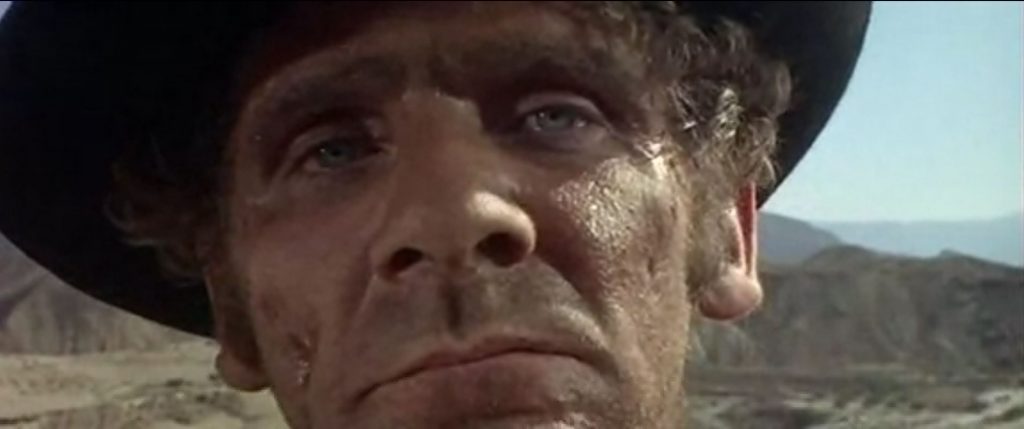
That’s not to say that there exist stories that we can’t tell using virtual reality… just that we’re only just beginning to find out feet with this new medium. When stage directors took their first steps into filmography in the early years of the 20th century, they originally tried to shoot films “as if” they were theatre (albeit, initially, silent theatre): static cameras shooting an entire production from a single angle. Later, they discovered ways in which this new medium could provide new ways to tell stories: using title cards to set the scene, close-ups to show actors’ faces more-clearly, panning shots, and so on.
Similarly: so long as we treat the current generation of VR as something different from the faltering steps we took two and a half decades ago, we’re in frontier territory and feeling our way in VR, too. Do you remember when smartphone gaming first became a thing and nobody knew how to make proper user interfaces for it? Often your tiny mobile screen would simply try to emulate classic controllers, with a “d-pad” and “buttons” in the corners of the screen, and it was awful… but nowadays, we better-understand the relationship that people have with their phones and have adapted accordingly (perhaps the ultimate example of this, in my opinion, is the addictive One More Line, a minimalist game with a single-action “press anywhere” interface).
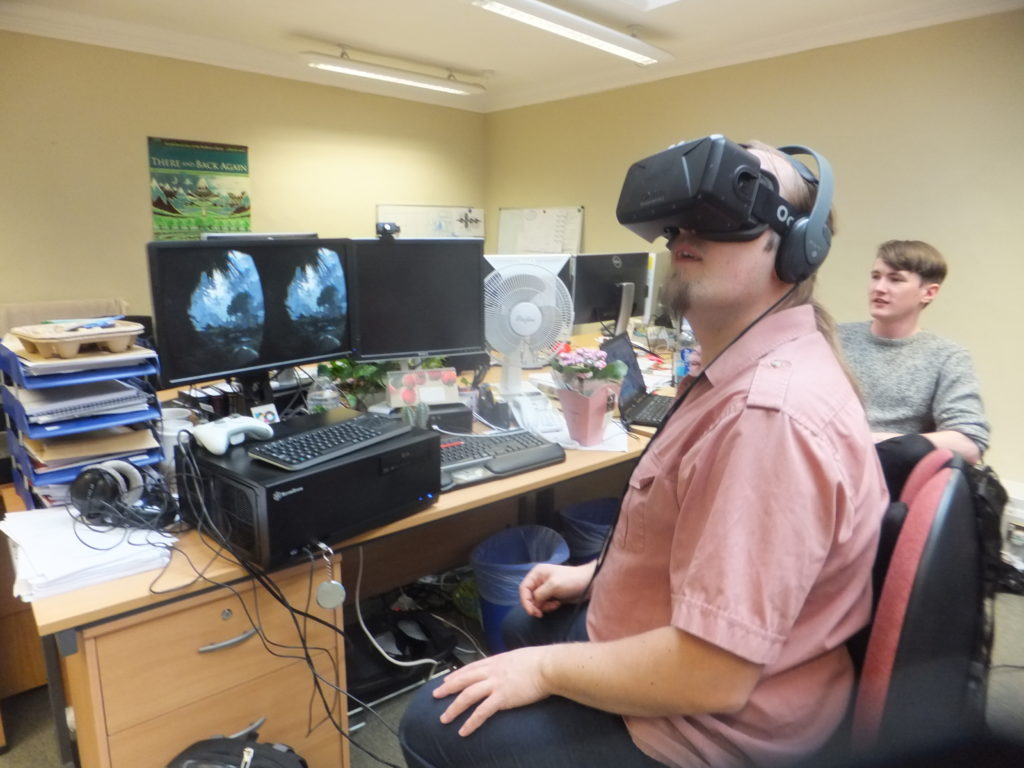
I borrowed an Oculus Rift DK2 from a co-worker’s partner (have I mentioned lately that I have the most awesome co-workers?) to get a little experience with it, and it’s honestly one of the coolest bits of technology I’ve ever had the priviledge of playing with: the graphics, comfort, and responsiveness blows Cardboard out of the water. One of my first adventures – Crytek’s tech demo Back to Dinosaur Island – was a visual spectacle even despite my apparently-underpowered computer (I’d hooked the kit up to Gina, my two-month old 4K-capable media centre/gaming PC: I suspect that Cosmo, my multi-GPU watercooled beast might have fared better). But I’ll have more to say about that – and the lessons I’ve learned – in the final part of this blog post.
This checkin to GLKZDAQT A Cryptic Cache reflects a geocaching.com log entry. See more of Dan's cache logs.
Solved the puzzle yesterday but didn’t get the chance to come hint for this one until this morning, even I took a diversion from dropping my niece off at nursery to come and hunt! Sapphirites wasn’t kidding: getting to the GZ by the obvious route (from the South) would be easier with wellies right now, don’t know about coming from the North but I suspect it might be better. Fun cache, nice puzzle, good hiding spot. TFTC.
This checkin to GLKZAE27 Take it to the Bridge reflects a geocaching.com log entry. See more of Dan's cache logs.
Found via a diversion from my cycle home this evening. Beaten to the FTF by Go Catch, of course, but that’s something I’m used to, these days! TFTC: nice to see a new cache this far out of the Oxford ring road.
This checkin to GC6AH8Y A Cryptic Cache reflects a geocaching.com log entry. See more of Dan's cache logs.
1st to solve… but I doubt that I can get there, first: probably won’t have time to visit until later this week, maybe even the weekend, unless I can rejigger my travel plans a little bit. Love the puzzle, though!
This is a repost promoting content originally published elsewhere. See more things Dan's reposted.
I’ve loved many computers in my life, but the HTPC has always had a special place in my heart. It’s the only always-on workhorse computer in our house, it is utterly silent, totally reliable, sips power, and it’s at the center of our home entertainment, networking, storage, and gaming. This handy box does it all,…
This is a repost promoting content originally published elsewhere. See more things Dan's reposted.
In 2007 I wrote about using PNGout to produce amazingly small PNG images. I still refer to this topic frequently, as seven years later, the average PNG I encounter on the Internet is very unlikely to be optimized.
For example, consider this recent Perry Bible Fellowship cartoon…
This is the first in a three-part blog post about telling stories using virtual reality. Read all of the parts here.
As part of my work at the Bodleian… but to a greater extent “just for fun”… I’ve spent the last few weeks playing with virtual reality. But first, a history lesson.

This isn’t the first time I’ve used virtual reality. The first time, for me, was in the early 1990s, at the Future Entertainment Show, where I queued for a shot at Grid Busters on a Virtuality 1000-CS. The Virtuality 1000 was powered by an “Expality”: functionally an Amiga 3000 with specially-written software for reading the (electromagnetically-sensed) facing of the headset and the accompanying “space joystick”… and providing output via a pair of graphics cards (one for each eye) to LCD screens. The screens were embedded in chunky bits on the sides of the helmet and projected towards mirrors and lenses at the far end – this apparently being an effort to reduce how “front-heavy” it felt, but I can tell you that in practice a Virtuality headset felt weighty on your neck, even for its era!
Nonetheless, the experience stuck with me: I returned to school and became the envy of my friends (the nerdy ones, at least) when I told them about my VR adventure, and – not least thanks to programs like Tomorrow’s World and, of course, the episode of Bad Influence that reminded me quite how badly I wanted to get myself down to Nottingham for a go at Legend Quest – I was genuinely filled with optimism that within the decade, playing a VR game would have gone from the fringes of science fiction to being something where everybody-knew-somebody who did it routinely.
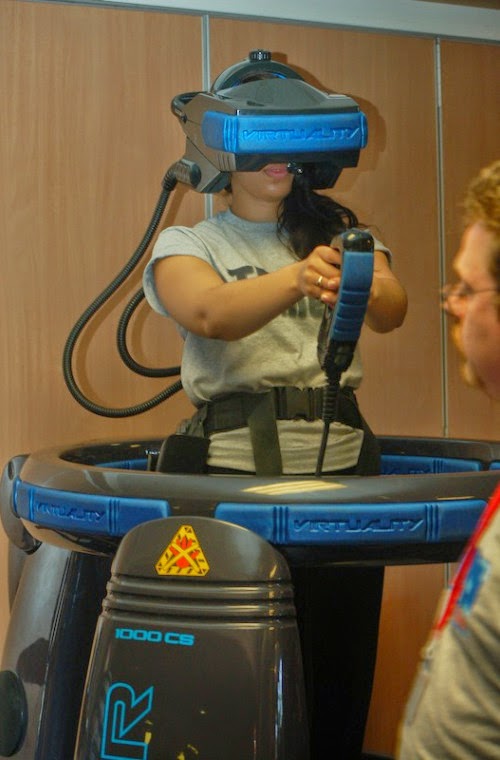
I never managed to get to play Legend Quest, and that first “VR revolution” swiftly fell flat. My generation was promised all of the hi-tech science, immersion, and magical experience of The Lawnmower Man, but all we were left with was the overblown promises, expensive effects, and ill-considered user experience of, well… The Lawnmower Man. I discovered Virtuality machines in arcades once or twice, but they seemed to be out-of-order more often than not, and they quickly disappeared. You can’t really blame the owners of arcades: if a machine costs you in the region of £40,000 to buy and you can charge, say, £1 for a 3-minute go on it (bear in mind that even the most-expensive digital arcade machines tended to charge only around 30p, at this time, and most were 10p or 20p), and it needs supervision, and it can’t be maintained by your regular guy… well, that swiftly begins to feel like a bad investment.

Plus, the fifth generation of games consoles came along: the (original) Sony PlayStation, the Nintendo N64, and – if you really wanted the highest-technology system (with the absolute least imaginative developers) – the Sega Saturn. These consoles came at price points that made them suitable Christmas gifts for the good boys and girls of middle-class parents and sported 3D polygon graphics of the type that had previously only been seen in arcades, and the slow decline of the video arcade accelerated dramatically. But home buyers couldn’t afford five-figure (still moderately-experimental) VR systems, and the market for VR dried up in a matter of years. Nowadays, if you want to play on a Virtuality machine like the one I did, you need to find a collector (you might start with this guy from Leicester, whose website was so useful in jogging my memory while I wrote this blog post).
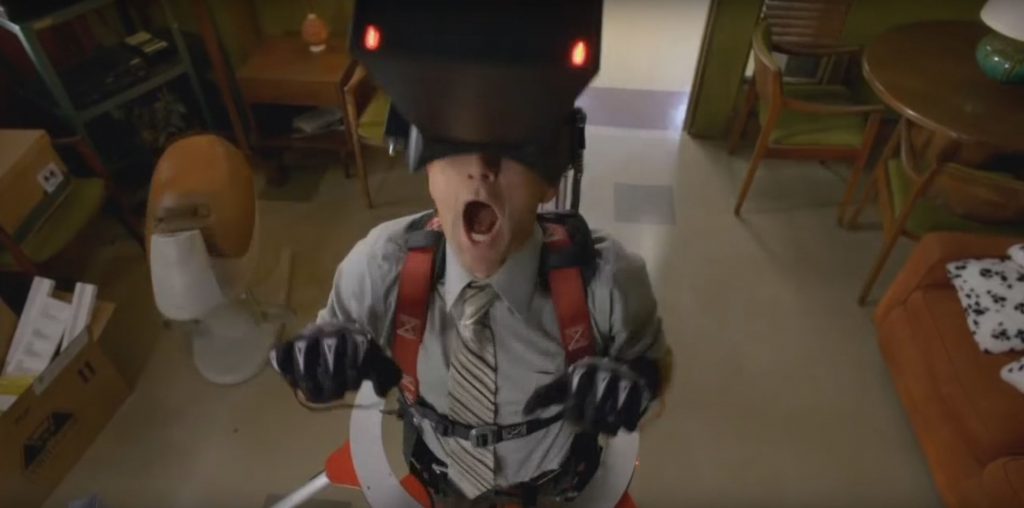
2016 is the year in which this might change. The need for ubiquitous cheap computing has made RAM and even processors so economical that we throw them away when we’re done with them. The demands of modern gaming computers and consoles has given us fast but affordable graphics rendering hardware. And the battle for the hottest new smartphones each year has helped to produce light, bright, high-resolution screens no bigger than the palm of your hand.
In fact, smartphones are now the simplest and cheapest way to play with VR. Under the assumption that you’ve already got a smartphone, you’re only a couple of cheap plastic lenses and a bit of cardboard away from doing it for yourself. So that’s how my team and I started out playing: with the wonderfully-named Google Cardboard. I know that Google Cardboard is old-hat now and all the early adopters have even got their grandmothers using it now, but it’s still a beautiful example of how economical VR threatens to become if this second “VR revolution” takes hold. Even if you didn’t already own a compatible smartphone, you could buy a second-hand one on eBay for as little as £30: that’s an enormous difference from the £40K Virtuality machines of my youth, which had only a fraction of the power.
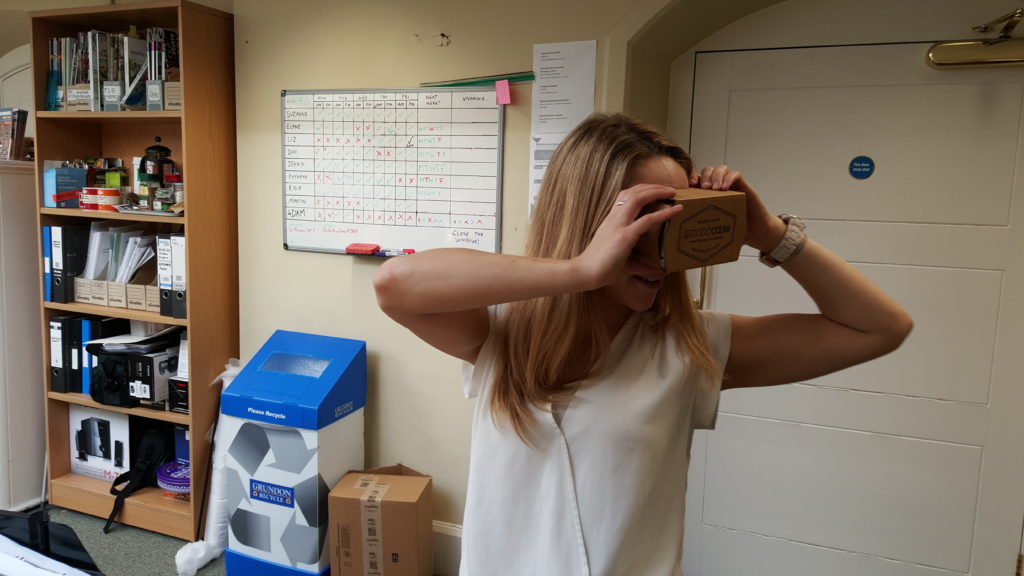
I’m going somewhere with this, I promise: but I wanted to have a jumping-off point from which to talk about virtual reality more-broadly first and it felt like I’d be overstretching if I jumped right in at the middle. Y’know, like the second act of The Lawnmower Man. In the next part of this series, I’d like to talk about the storytelling opportunities that modern VR offers us, and some of the challenges that come with it, and share my experience of playing with some “proper” modern hardware – an Oculus Rift.
Despite a full workload and a backlog of both work, personal, volunteering and study emails to deal with, 2016 is off to a pretty good start so far. Here’s some highlights:

I hope everybody else’s year is kicking off just as well.
* With one possible exception: the other year, an overenthusiastic bouncer insisted that I join a queue of one in turn to show him my ID before he let me into a nightclub at 9:30pm on a Wednesday night. Like I said, overenthusiastic.